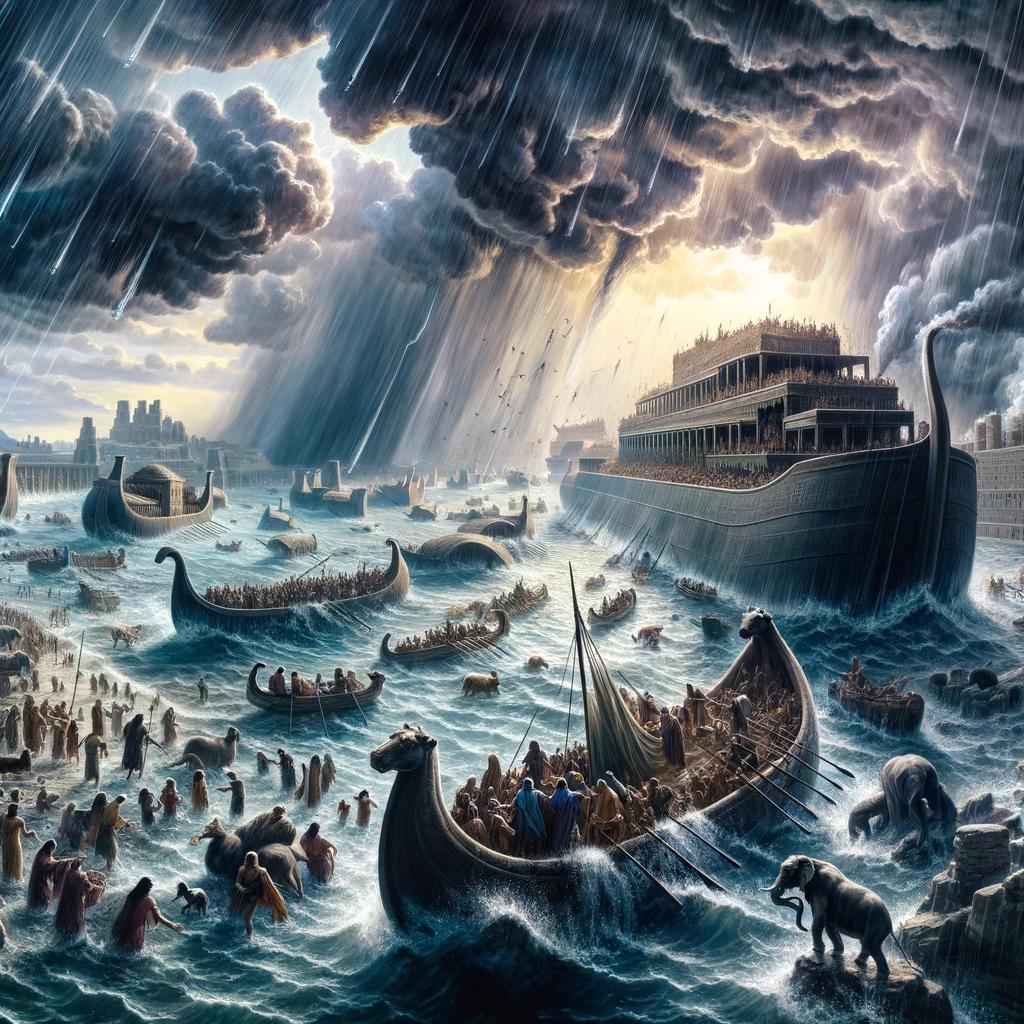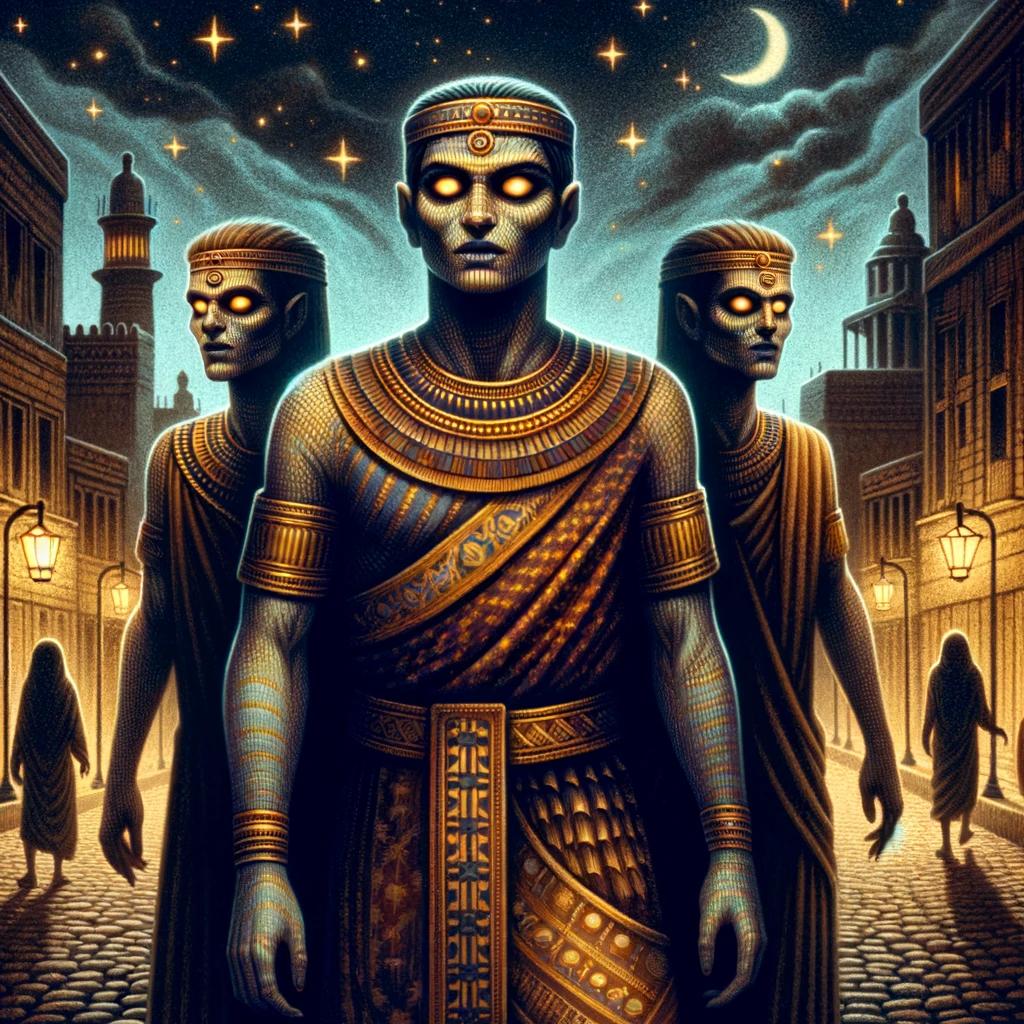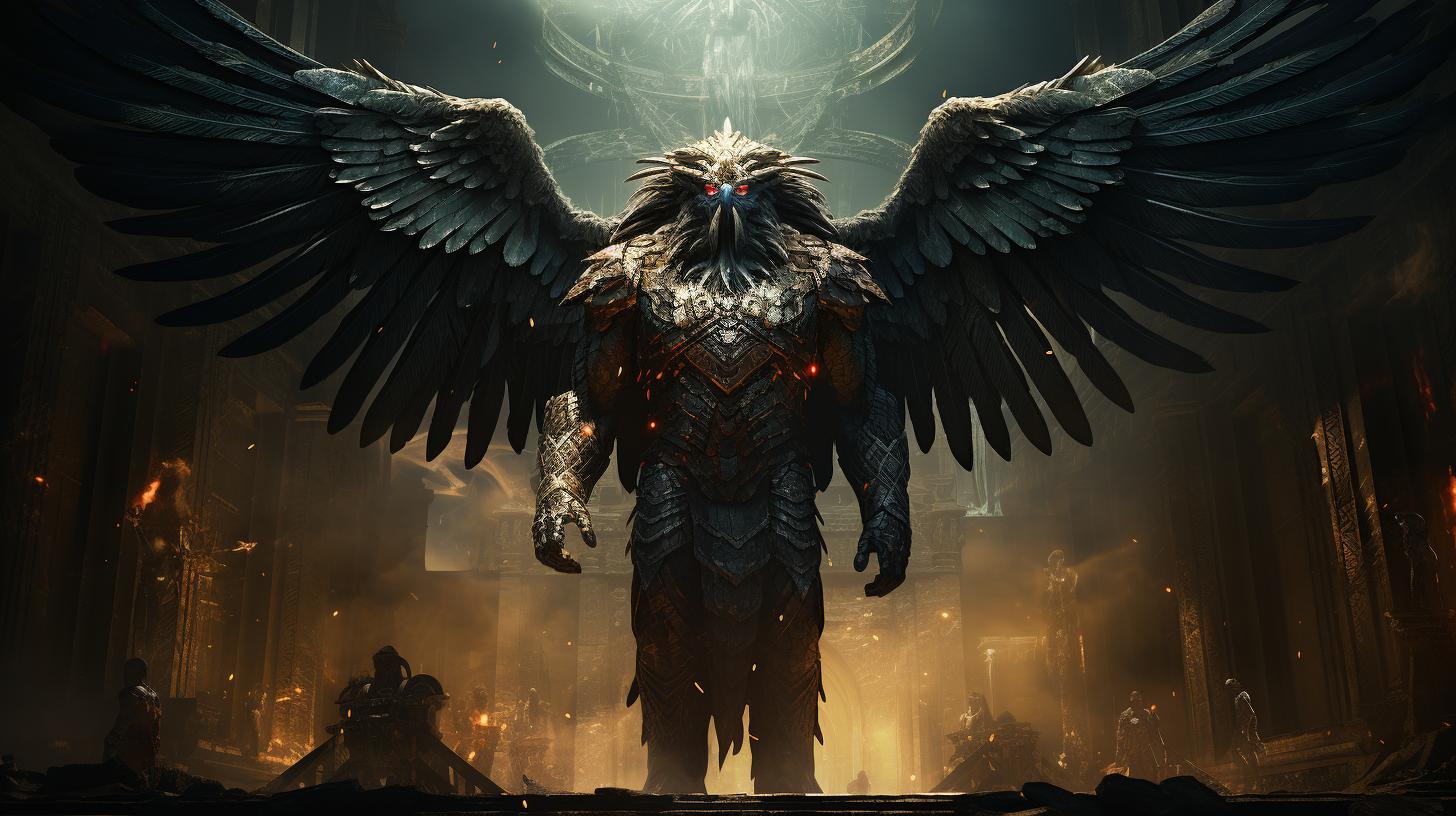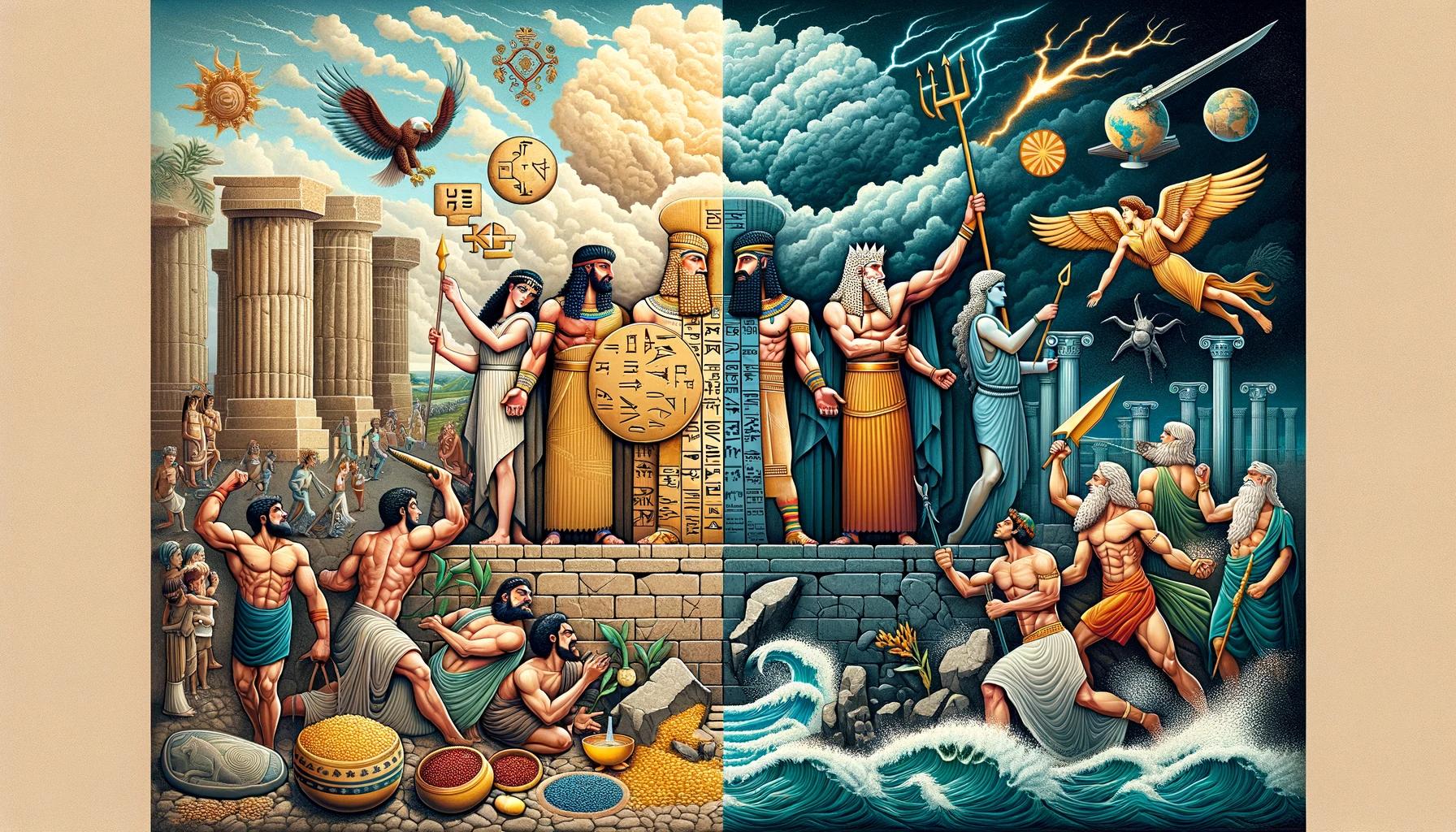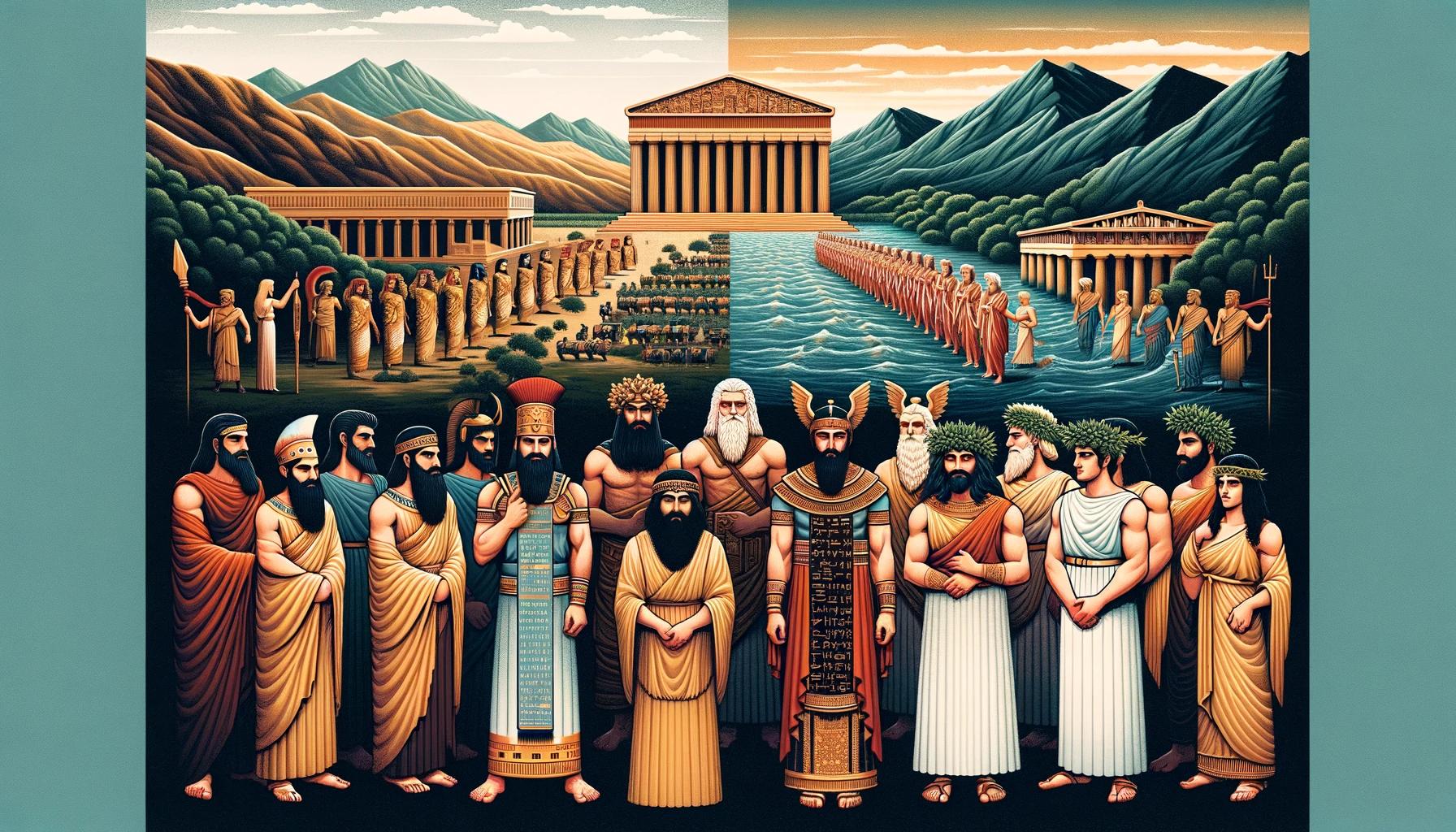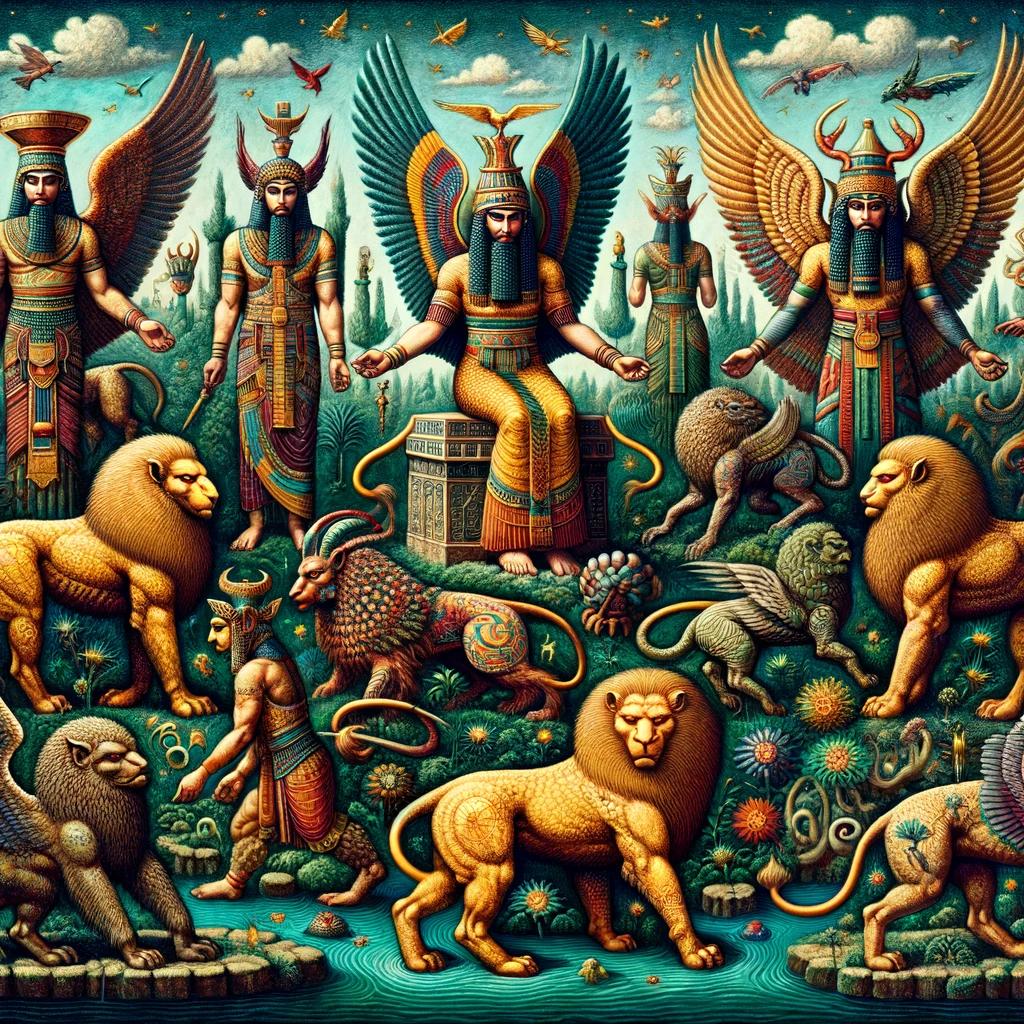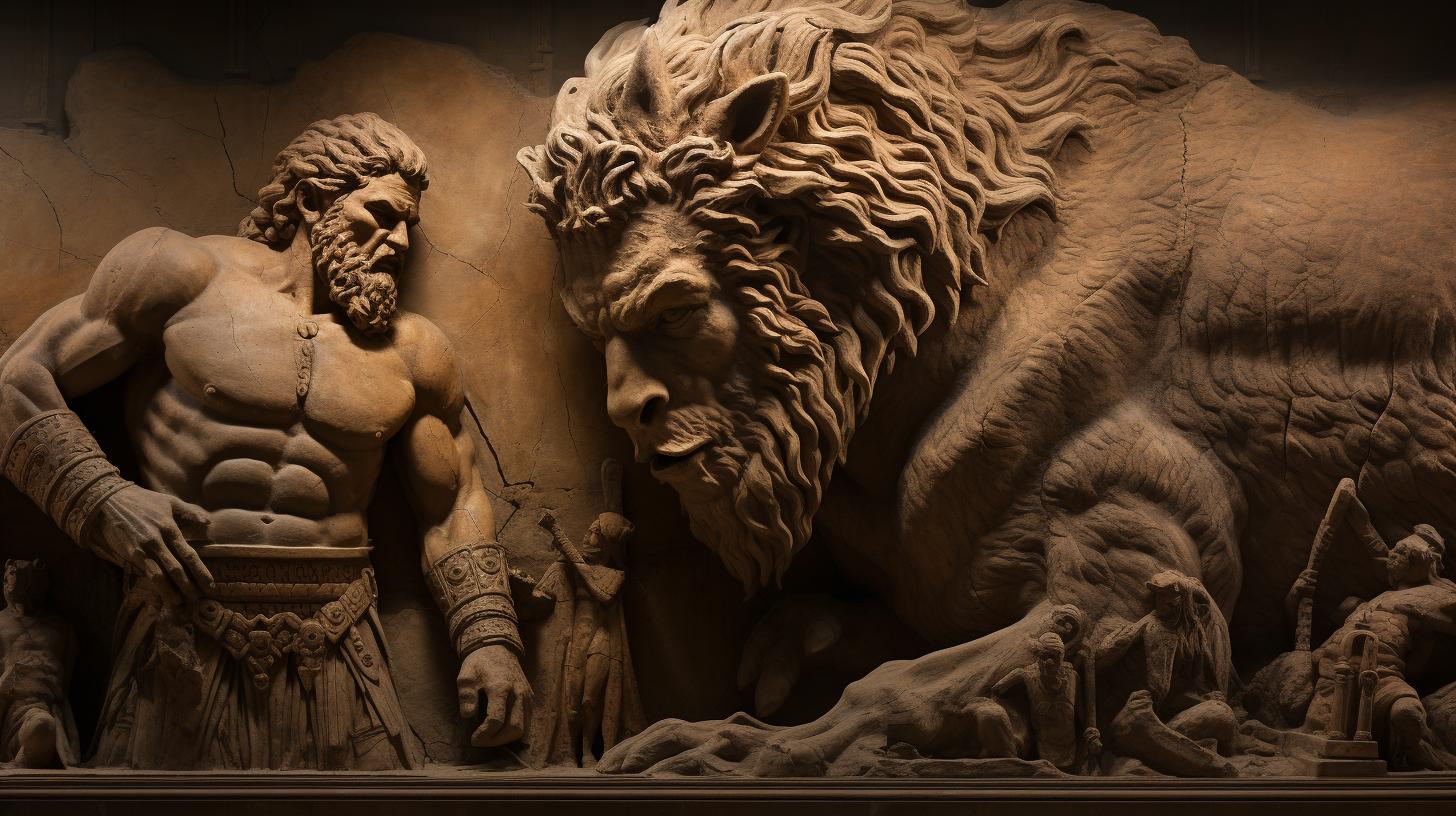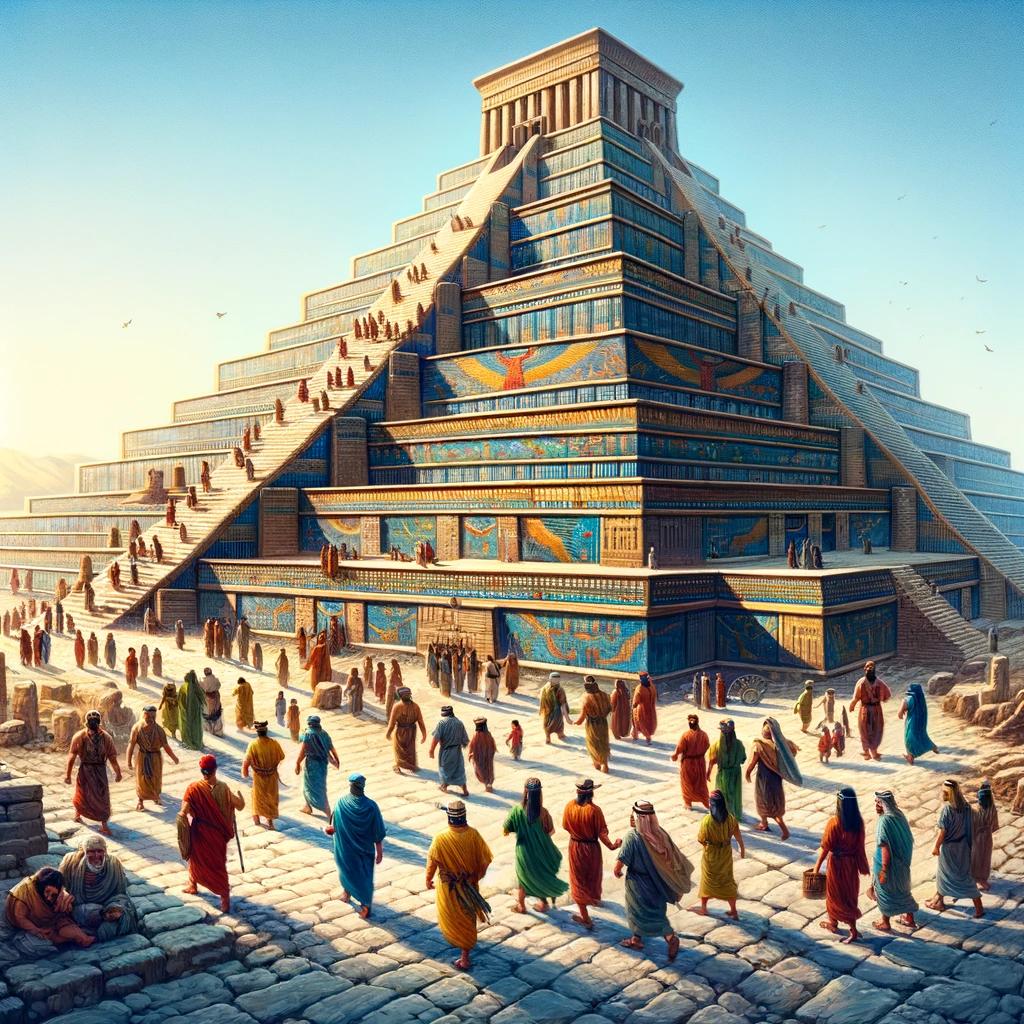‘Mesopotamian Flood Myth: The Ancient Tale of Devastation and Renewal’
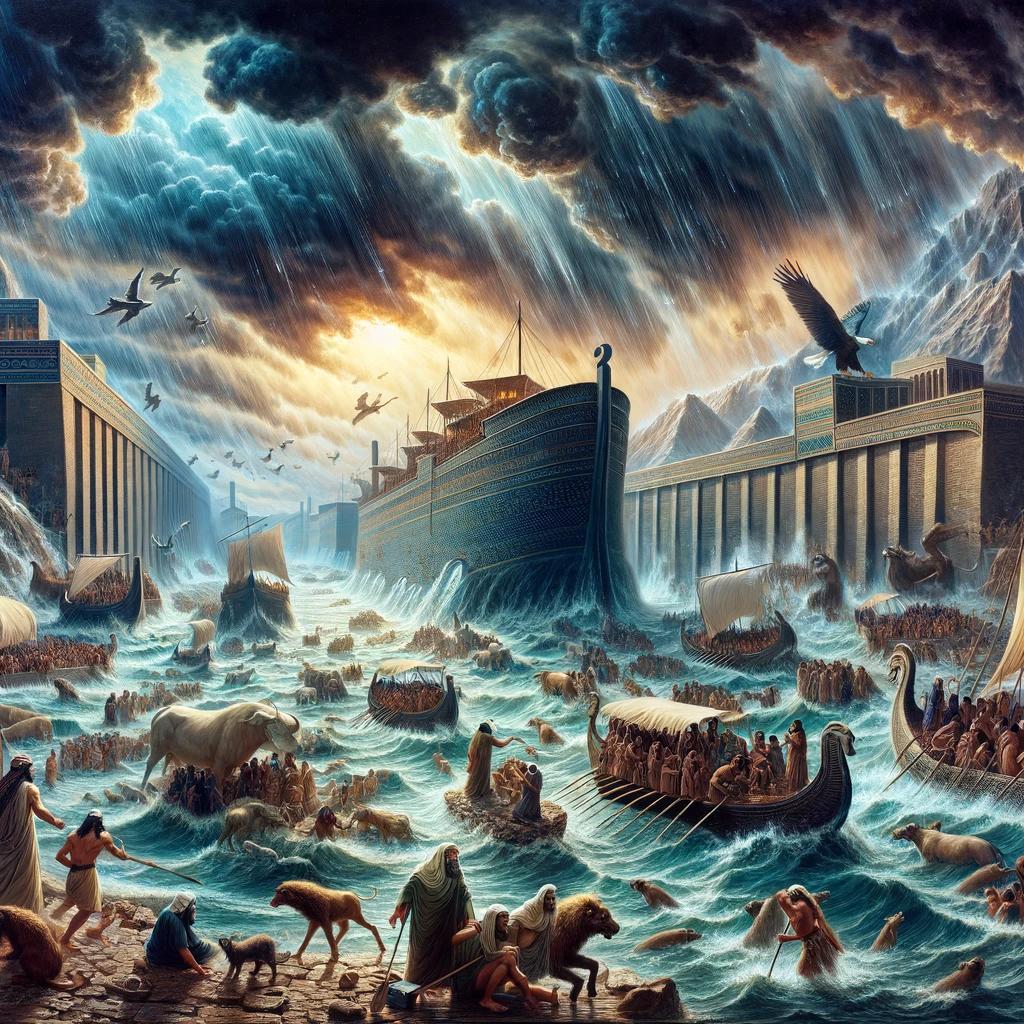
The Mesopotamian Flood Myth is an ancient tale of devastation and renewal. This myth, widely known in various cultures, shares similarities with flood stories from around the world. One of the most famous flood myths is the biblical account of Noah’s Ark, where Noah is chosen by God to build an ark and save humanity and animals from the impending flood.
The Mesopotamian flood myth, explored in this article, reveals puzzles and parallels to the biblical narrative, shedding light on the themes of gods, humanity, and the creation of a new world.
Mesopotamian Flood Myth: Exploring the Ancient Tale of Devastation and Renewal
The Mesopotamian Flood Myth is a captivating narrative that delves into the ancient origins of mankind and its relentless quest for renewal. This intriguing tale takes us back to the cradle of civilization, Mesopotamia, where the waters of destruction brought both devastation and the promise of rebirth.
In this enthralling account, we witness the horrors of a cataclysmic flood that engulfs the land, wiping away all traces of the existing world. The mighty Tigris and Euphrates Rivers become agents of divine retribution, shaping the destinies of both gods and mortal beings.
It is within the context of this catastrophic event that we encounter heroic figures such as Utnapishtim, the protagonist of the Epic of Gilgamesh, and Ziusudra, the central character in the Babylonian Epic of Atrahasis. These figures, chosen by the gods, are granted the knowledge and means to survive the impending deluge, ensuring the continuity of life.
As we delve deeper into the Mesopotamian Flood Myth, we unravel the intricate layers of its allegorical meaning. It highlights the eternal struggle between humanity and the forces of nature, underscoring the fragile balance between civilization and chaos.
Moreover, this myth serves as a testament to the Mesopotamian culture’s deep reverence for the divine and the profound understanding of the cyclical nature of existence. Through stories passed down through generations, the Mesopotamians sought to comprehend the chaotic realities of their world, find solace in the face of uncertainty, and reaffirm the power of their gods.
Join us on a fascinating journey as we dissect the Mesopotamian Flood Myth, peeling back its ancient layers to unlock its profound wisdom and timeless significance. Together, we will explore the intricacies of this tale of devastation and renewal, shedding light on the rich tapestry of Mesopotamian culture and its enduring impact on human history.
Flood Stories from Around the World: A Global Perspective on Deluge Myths
Flood stories have permeated cultures across the globe, showcasing the universal fascination with catastrophic deluges and their aftermath. These myths often portray the destruction of humanity and the subsequent rebirth of the world.
Two prominent examples are the Greek Flood Myth and the Chinese Flood Myth, each offering a unique perspective on the consequences of divine wrath and human survival.
Greek Flood Myth: Deucalion and Pyrrha Escape the Great Flood
In Greek mythology, the flood was unleashed by Zeus as punishment for humanity’s moral decline. Deucalion and Pyrrha, the only righteous individuals left, were forewarned of the impending deluge and instructed to build an ark.
They obediently followed Zeus’ guidance and survived the catastrophic flood. After the waters receded, Deucalion and Pyrrha repopulated the earth by throwing stones over their shoulders, which miraculously transformed into humans.
Chinese Flood Myth: The Story of Nuwa and the Repair of the Heavens
The Chinese flood myth tells of a great flood that threatened to destroy humanity. In this narrative, Nuwa, a revered deity, merged colorful stones and repaired the broken heavens, preventing further devastation.
Nuwa then molded figures out of yellow clay, breathing life into them to restore the human population. This flood myth emphasizes the role of a divine entity not only in the destruction but also in the reconstruction of civilization.
These flood stories from different cultures elucidate humanity’s fascination with cataclysmic floods as a means of cleansing and renewal. They highlight the prevailing theme of a chosen few surviving through divine intervention, providing valuable insights into the shared human experience of destruction and the resilience to rebuild anew.
The Biblical Flood Myth: Noah’s Ark and the Divine Covenant
The biblical flood myth recounts the renowned tale of Noah and the divine covenant established amidst the catastrophic deluge. This narrative centers around Noah, portrayed as a chosen patriarch, who receives a warning from God about the impending disaster.
Instructed to build an ark, Noah diligently constructs a vessel capable of saving himself, his family, and a diverse array of animal species.
The Story of Noah: God’s Chosen Patriarch and the Ark Construction
Noah’s role as the protagonist in the biblical flood myth embodies his righteous character and unwavering devotion to God.
Tasked with the monumental responsibility of constructing the ark, Noah diligently fulfills his divine duty. Following God’s explicit instructions, Noah gathers materials and meticulously crafts a vast vessel to withstand the cataclysmic floods destined to engulf the earth.
The ark itself serves as a testament to Noah’s unwavering faith and obedience. Built to specific dimensions, it becomes a sanctuary for Noah, his family, and a remnant of the animal kingdom.
This grand endeavor showcases Noah’s resilience and commitment to preserving life amidst the imminent destruction.
The Aftermath: Sacrifices, Covenant, and the Promise of No More Destruction
After enduring the relentless floodwaters, Noah and his ark eventually come to rest on dry land, signifying the end of the cataclysmic event. In gratitude for their survival, Noah offers sacrifices to God as an expression of thanksgiving and reverence.
Impressed by Noah’s piety, God establishes a solemn covenant, promising to never again bring forth such widespread destruction. To seal this pact, God manifests a rainbow in the sky, serving as a vivid reminder of this divine promise to future generations.
Through this covenant, humanity is granted a renewed chance at life, symbolizing hope and a fresh beginning.
The story of Noah’s Ark and the divine covenant is not only a cornerstone of biblical literature but also a significant testament to human resilience, divine grace, and the enduring power of faith amidst extraordinary challenges.
Mesopotamian Flood Myth: Puzzles and Parallels to the Biblical Account
The Mesopotamian Flood Myth holds intriguing puzzles and fascinating parallels when compared to the biblical narrative of Noah’s Ark. Two prominent Mesopotamian epics, The Epic of Gilgamesh and the Babylonian Epic of Atrahasis, offer valuable insights into the ancient Mesopotamian perception of the deluge.
These narratives feature Utnapishtim and Ziusudra, respectively, as the central characters who navigate the catastrophic flood and survive through divine intervention.
The Epic of Gilgamesh: Utnapishtim’s Epic Journey to Survive the Deluge
In the Mesopotamian epic The Epic of Gilgamesh, Utnapishtim receives a warning from the god Ea about the impending flood.
He is instructed to build an immense boat, similar to Noah’s ark, to preserve himself, his family, and various animals. Utnapishtim endures the deluge for six days and nights, after which he releases a dove, a swallow, and a raven to ascertain if the floodwaters have receded.
Eventually, Utnapishtim and his wife are rewarded with immortality by the gods.
The Babylonian Epic of Atrahasis: Ziusudra and the Gods’ Plan for Destruction
In the Babylonian Epic of Atrahasis, the story centers around Ziusudra, who is forewarned by the god Enki about the approaching deluge. Ziusudra builds an enormous boat and brings his family, craftsmen, and various animals on board.
The gods, furious over human overpopulation, unleash a catastrophic flood to wipe out humanity. After the flood subsides, Ziusudra offers sacrifices to the gods, resulting in his divine transformation and eternal life.
These Mesopotamian flood myths not only share common elements with the biblical narrative but also offer nuanced perspectives on humanity’s relationship with the divine and the overarching theme of renewal after destruction.
Exploring these puzzles and parallels provides invaluable insights into the rich cultural heritage and ancient worldviews of Mesopotamia.
Exploring the Themes: Myths, Gods, and Humanity in Flood Narratives
As we delve into the mesmerizing tales of flood myths, we encounter a rich tapestry of themes that weave together the realms of myths, gods, and humanity. These narratives offer profound insights into the human condition and our relationship with the divine forces that shape our world.
The Role of Gods: Divine Wrath and Preservation of the Chosen Few
Within the flood narratives, gods play a pivotal role, wielding their divine power to bring about catastrophic events. They unleash their wrath upon humanity, driven by a perceived need for purification or punishment.
Nonetheless, amidst the devastation, a glimmer of hope shines through as the gods also display mercy and compassion, ensuring the survival of a select few individuals or families deemed worthy. This divine intervention sparks contemplation about the intricate balance between divine judgment and human agency.
The Significance of the Ark: Symbolizing Hope, Salvation, and Rebirth
Central to many flood myths, such as the Mesopotamian and biblical accounts, is the presence of an ark or vessel. The ark represents a symbol of salvation, a refuge amid the turmoil of the deluge.
It encapsulates hope and resilience, as humanity seeks sanctuary within its protective walls. The biblical story of Noah’s ark, along with other flood narratives, conveys the profound message of rebirth, underscoring the potential for transformation and renewal even in the face of overwhelming challenges.
Human Resilience and the Creation of a New World: Lessons Learned from Flood Myths
Flood myths teach us invaluable lessons about the resilience of the human spirit. Despite the devastation that engulfs their world, the survivors in these narratives muster the strength to rebuild, preserving the remnants of their culture and ushering in a new era.
Through their tenacity and resourcefulness, they demonstrate the indomitable spirit that allows humanity to rise from the ashes and construct a better future. The stories of these survivors serve as a reminder that even in times of great adversity, we possess the innate ability to forge a path towards renewal and create a new world.
In exploring the themes of myths, gods, and humanity in flood narratives, we gain a profound understanding of the human condition, our relationship with the divine, and the transformative power of resilience.
These timeless tales continue to captivate us, inviting introspection and reflection on the enduring lessons they impart.
Unveiling Ancient History: Tracing the Origins and Evolution of Flood Myths
Unveiling Ancient History uncovers the mysterious origins and evolution of flood myths, shedding light on the fascinating narratives that have captivated cultures throughout time. This section explores two significant aspects of the Mesopotamian Flood Myth.
The Sumerian Flood Myth: A Tale of Divine Retribution and Survival
The Sumerian Flood Myth recounts a gripping story of divine retribution and survival. Legends tell of the gods’ wrath against humanity’s corruption, leading to a catastrophic flood that engulfs the world.
The hero of this epic tale, Ziusudra, is chosen by the gods and instructed to build an immense vessel to weather the impending deluge. Through his courage and resourcefulness, Ziusudra navigates the treacherous waters, emerging as the sole survivor and the bearer of humanity’s future.
The Great Flood in Ancient Mesopotamia: Historical Accounts and Cultural Impact
The Great Flood in ancient Mesopotamia holds historical accounts that shape our understanding of the period. These narratives testify to the significant impact of catastrophic flooding on the development of Mesopotamian civilization.
Scholars analyze archaeological evidence, cuneiform tablets, and ancient texts to uncover the profound influence of the flood on societal structures, religious beliefs, and cultural practices. The accounts of the Great Flood continue to resonate in Mesopotamian art, literature, and the collective memory of its people.
Examining the Flood Myth Legacy: Influence on Literature, Art, and Popular Culture
Biblical Flood Myth: Enduring Influence on Western Literature and Art
The Biblical flood myth, featuring Noah’s Ark, has had a significant and enduring impact on Western literature and art. This timeless tale of survival, redemption, and divine intervention has inspired countless works of fiction, poetry, and visual art.
From John Milton’s epic poem “Paradise Lost” to the iconic paintings depicting Noah and the Ark, the Biblical flood myth continues to captivate audiences and serve as a source of creative inspiration.
The Deluge in World Mythologies: Cross-Cultural Adaptations and Interpretations
Beyond its influence on Western culture, the concept of the deluge and flood myths hold a prominent place in numerous world mythologies. These narratives, found in various cultures across the globe, often reflect unique adaptations and interpretations of the universal theme of catastrophic floods.
From the Ancient Greek myth of Deucalion and Pyrrha to the Chinese myth of Nuwa, these stories highlight the diverse ways in which different societies have incorporated the motif of the flood into their own mythological traditions.
- Deucalion and Pyrrha: In Greek mythology, Deucalion and Pyrrha survive the Great Flood and repopulate the earth by casting stones that transform into humans.
- Nuwa and the Repair of the Heavens: Chinese mythology tells the story of Nuwa, who repaired the heavens after a devastating flood and created humans using clay.
The enduring popularity and adaptability of flood myths in literature, art, and popular culture demonstrate their timeless appeal and the universal fascination with stories of destruction and renewal.
Through these creative expressions, the flood myths continue to resonate with audiences around the world, offering insights into human nature, the power of divine intervention, and the enduring quest for survival in the face of overwhelming adversity.
Unraveling the Mysteries: Exploring Controversies and Interpretations Surrounding Flood Myths
In this section, we delve into the intriguing debates and interpretations surrounding the Mesopotamian Flood Myth, shedding light on the controversies that have shaped our understanding of this ancient tale. We explore two key aspects: comparing versions of the Old Babylonian Flood Myth and evaluating scientific perspectives through the lenses of geology, archaeology, and the ongoing Great Flood Debate.
Old Babylonian Flood Myth: Comparing Versions and Expanding Our Understanding
The Old Babylonian Flood Myth is a captivating narrative that predates the biblical account of the flood. Comparing the various versions of this myth, we unravel the nuances and similarities that offer insights into the cultural context and the evolution of the flood story over time.
By delving into the ancient Mesopotamian texts such as the Epic of Gilgamesh and the Atrahasis, we can gain a deeper understanding of the flood myth’s origins and significance.
Evaluating the Scientific Perspectives: Geology, Archaeology, and the Great Flood Debate
Bringing a scientific lens to the discussion, we examine the geological and archaeological evidence relating to global flooding events. Through the scrutiny of sedimentary layers, ancient ruins, and paleoclimate data, scientists have sought to validate or challenge the plausibility of a catastrophic deluge on a global scale.
We navigate through the Great Flood Debate, considering different hypotheses and theories put forth by experts in the field, ultimately aiming to shed light on the intersection between scientific findings and ancient flood myths.
.

